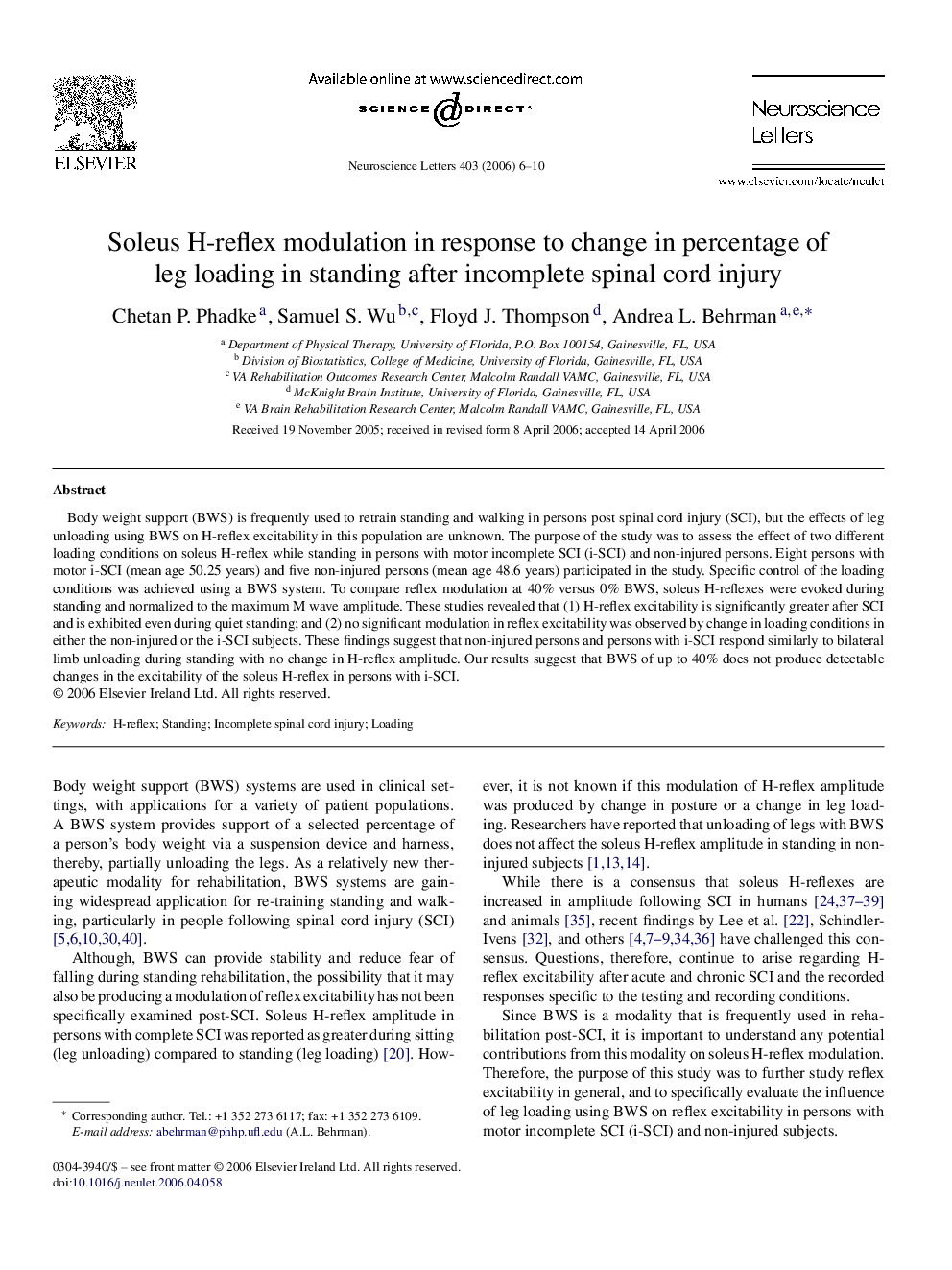| Article ID | Journal | Published Year | Pages | File Type |
|---|---|---|---|---|
| 4350390 | Neuroscience Letters | 2006 | 5 Pages |
Abstract
Body weight support (BWS) is frequently used to retrain standing and walking in persons post spinal cord injury (SCI), but the effects of leg unloading using BWS on H-reflex excitability in this population are unknown. The purpose of the study was to assess the effect of two different loading conditions on soleus H-reflex while standing in persons with motor incomplete SCI (i-SCI) and non-injured persons. Eight persons with motor i-SCI (mean age 50.25 years) and five non-injured persons (mean age 48.6 years) participated in the study. Specific control of the loading conditions was achieved using a BWS system. To compare reflex modulation at 40% versus 0% BWS, soleus H-reflexes were evoked during standing and normalized to the maximum M wave amplitude. These studies revealed that (1) H-reflex excitability is significantly greater after SCI and is exhibited even during quiet standing; and (2) no significant modulation in reflex excitability was observed by change in loading conditions in either the non-injured or the i-SCI subjects. These findings suggest that non-injured persons and persons with i-SCI respond similarly to bilateral limb unloading during standing with no change in H-reflex amplitude. Our results suggest that BWS of up to 40% does not produce detectable changes in the excitability of the soleus H-reflex in persons with i-SCI.
Related Topics
Life Sciences
Neuroscience
Neuroscience (General)
Authors
Chetan P. Phadke, Samuel S. Wu, Floyd J. Thompson, Andrea L. Behrman,
